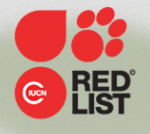The International Union for Conservation of Nature (IUCN) released the latest update to its ‘IUCN Red List of Threatened Species™' at the World Conservation Congress (WCC), taking place in Hawai'i, the US.
The Red List reports the decline of great ape species and threats to other species from illegal harvesting and invasive species.
 4 September 2016: The International Union for Conservation of Nature (IUCN) released the latest update to its ‘IUCN Red List of Threatened Species™’ at the World Conservation Congress (WCC), taking place in Hawai’i, the US. The Red List reports the decline of great ape species and threats to other species from illegal harvesting and invasive species.
4 September 2016: The International Union for Conservation of Nature (IUCN) released the latest update to its ‘IUCN Red List of Threatened Species™’ at the World Conservation Congress (WCC), taking place in Hawai’i, the US. The Red List reports the decline of great ape species and threats to other species from illegal harvesting and invasive species.
The Red List includes 82,954 species, out of which 23,928 are threatened with extinction, 855 are extinct, and 68 are extinct in the wild. The Red List classifies 5,107 species as critically endangered, 7,602 as endangered, 11,219 as vulnerable, and 5,323 as near threatened. It also includes categories for lower risk, least concern and species for which there is not sufficient data.
Four out of six great ape species are classified as critically endangered on the Red List, while the remaining two face the threat of extinction. Grauer’s Gorilla has lost 77% of its population since 1994 while the Eastern Gorilla has declined by over 70% in 20 years, with estimates of the two populations at approximately 3,800 and 5,000, respectively. The Mountain Gorilla has increased its population to 800 individuals.
The Plains Zebra has decreased by 24% over the past 14 years, moving from the category of least concern to near threatened, due to hunting for bushmeat and skins. Three African antelope species also moved from least concern to near threatened as a result of illegal hunting and habitat loss outside of protected areas (PAs).
In Hawai’i, 87% of native flora are threatened with extinction, 38 of the 415 endemic Hawaiian plant species are listed as extinct, and another four species only occur in cultivation. Invasive species represent the main threat to these species. IUCN Hawaiian Plant Specialist Group member, Matt Keir, stressed, “What we see happening in Hawai’i is foretelling what will happen in other island or contained ecological systems,” urging action to “stop the spread of invasive species and to protect species with small population sizes.”
The Red List also highlights positive results for some species, such as the Giant Panda, which moved from endangered to vulnerable as a result of forest protection and reforestation, although IUCN cautions that climate change may reverse this trend unless forest protection measures continue and emerging threats are addressed. The Tibetan Antelope moved from endangered to near threatened following its protection from commercial poaching.
During a press conference, Jane Smart, IUCN, explained the Red List catalyzes action by providing information. Carlo Rondinini, Sapienza University of Rome, highlighted that habitat destruction and illegal hunting are main drivers of extinction, adding that conservation works, but needs to be scaled up. IUCN Director General, Inger Andersen, reflected that “each IUCN Red List update makes us realize just how quickly the global extinction crisis is escalating.” She stressed the importance of conservation action and the need to enhance efforts to protect the future of our planet.
IUCN, its Species Survival Commission, and nine Red List partner institutions announced a commitment to double the number of species on the Red List by 2020, with more than US$10 million over the next five years. At a separate WCC event, IUCN highlighted a five-year partnership with Toyota Motor Corporation, initially announced in May 2016, to fund the expansion of the Red List. As part of its ‘Environmental Challenge 2050,’ Toyota will help IUCN and its partners increase its species assessment from 80,000 to 160,000 species assessed. [IUCN Press Release] [WCC Press Release] [WCC Website] [IISD RS Coverage of the WCC] [IISD RS IUCN Congress Bulletin, 4 September] [IUCN Red List Website] [IUCN Press Release on Toyota Partnership]